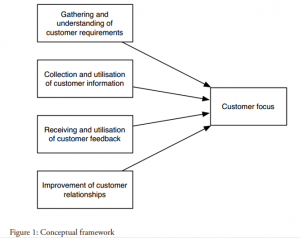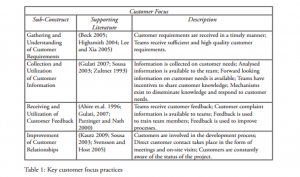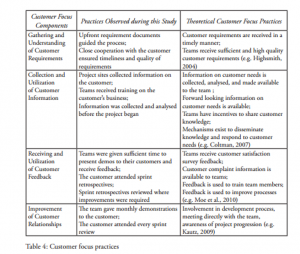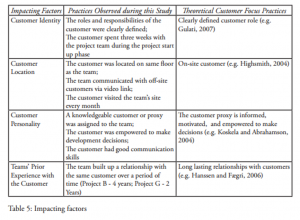
Dr. Albert Simon Mugo, PhD, Grand PhD Reading
Assoc. Professor, (IUFS), Oxford Educational Network
Lecturer, Technical University of Kenya, P. O. Box 86087 – 00200, Nairobi, Kenya.
Correspondence email: smugo717@gmail.com
CUSTOMER FOCUS THEORY
Customer focus is a multi-dimensional construct that has its origins in the management and marketing disciplines (Gulati and Oldroyd 2005; Kumar et al. 2008; Mohr-Jackson 1991; Sousa 2003). The concept can be traced back to the management literature of the 1950s when Drucker (1954) argued that customer focus should be the main strategic aim of any organization and that the customer should be the main reason for the existence of the organization. Customer focus is arguably more important in today’s operating environments where having a customer focus is regarded as being vital to success in the modern market place (Baldrige 2010; Day 2003;).
There is a long tradition of considering Information Systems Development (ISD) from the perspective of management and marketing and applying insights, theories and frameworks from these reference disciplines to examine and understand ISD issues (Albert et al. 2004; Slaughter et al. 2006). Studies within different fields use various sub-constructs when measuring customer focus that include knowledge of the customer, their requirements and their current and future needs. Customer relationships, customer involvement, customer knowledge, and customer feedback Sousa (2003). Gulati (2007) found that coordination, cooperation, capability development and connection with the customer leads to customer focus. Kumar et al. (2008) found that a customer focused sales campaign significantly increased profits and return on investment. They used the knowledge of the customers’ needs as a measure of the customer focus of the sales team. In summary Customer focus sub-constructs used in these studies are all incorporated into the broad constructs within the conceptual framework shown in figure 1.

(Lohan and Conboy, 2011)
Tables 4 and 5 list the practices observed in case sites which best helped the ASD teams achieve a customer focus. The right hand column shows that many of these practices have been previously suggested in the literature. However, the literature is fragmented and empirical evidence is limited. This study highlights the fact that, for agile project managers, all the components listed below need to be considered during an ASD project. Project managers can determine which components are important in the context of any particular project.

(Lohan and Conboy, 2011)

(Lohan and Conboy, 2011)
Previous research has recognized that projects are more successful when there are more developer-customer links and less use of customer representatives (Keil and Carmel 1995). This is because the exchange of information between customers and developers is important to develop mutual understanding and this understanding diminishes when communication channels are distorted by intermediaries.

References
Albert, T. C., Goes, P. B., and Gupta, A., (2004). GIST: A model for design and management
of content and interactivity of customer-centric websites. MIS Quarterly, (28:2): 161-182.
Baldrige. (2010). Criteria for Performance Excellence. Retrieved 6th November, 2010, from
http://www.baldrige.nist.gov/PDF_files/2009_2010_Business_Nonprofit_Criteria.pdf
Gulati, R., (2007). Silo busting. Harvard Business Review, (85:5): 98-108.
Gulati, R., and Oldroyd, J. B., (2005). The quest for customer focus. Harvard Business Review,
(83:4): 92-101.
Keil, M., and Carmel, E., (1995). Customer-developer links in software development. Communications of the Acm, (38:5): 33-44.
Sousa, R., (2003). Linking quality management to manufacturing strategy: an empirical investigation of customer focus practices. Journal of Operations Management, (21:1): 1-18.


